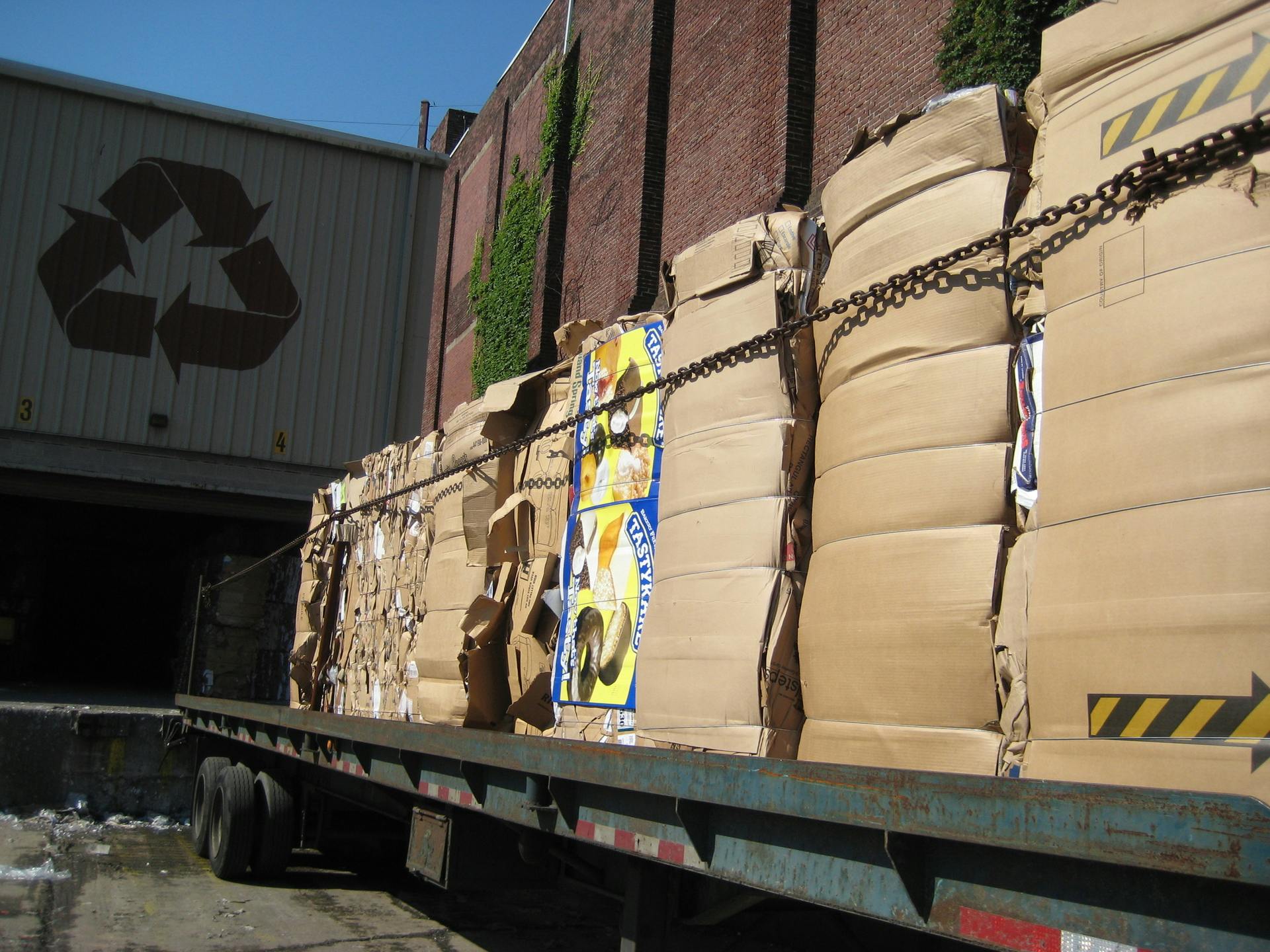Paper and cardboard products are some of the most recyclable items around. Nearly all paper and cardboard can be recycled in some way, and that’s important to keep in mind for businesses which go through a large amount of paper. The average American uses 7 trees worth of paper and wood products each year. That’s over 2,000,000,000 trees per year for the country. Think about how many employees your business has and you can do the math for your own company. But by recycling your paper and cardboard waste, you can drastically reduce the number of trees harvested to make these products. So how exactly does the waste paper recycling process work?
Step 1: Collection

The process begins with waste paper collection. Accurate Recycling will pick up your waste paper from your place of business and transport it to our treatment facility. By using a baler the waste paper can be loaded for transportation more compactly and efficiently, saving both time and money. Of all the steps in the process, this is likely the one you’re most familiar with.
Step 2: Sorting:
Next comes the sorting of the waste paper. Not all paper products are created equal, and different kinds are recycled into different products. The paper is sorted based on the type and grade. This means the paper is sorted based on what kind it is and the quality of it. For example, newspapers are a much thinner variety of paper when compared to the more rigid cardstock. These both have different amounts and varieties of fiber which make them up, so they should be separated at this point. The quality of paper is important too. Paper can only be recycled so many times before the fibers which make it up become too broken down. Lower quality paper may be set aside for disposal.
Step 3: Shredding/Pulping

The shredding and pulping process is where the magic of paper recycling really begins. Once sorted, paper is then shredded so that it can be worked into pulp. This is done by mixing the shredded paper with water, sometimes with a 1/99 paper to water ratio. When inked paper goes through this process, the resulting pulp can have a grey coloring to it. This will be fixed in the next step of the process.
However, before moving on, the shredding and pulping step has another key component. It’s at this stage that non-paper items are filtered out of the mix. All of the paperclips, staples, plastic films, and other contaminants are filtered out of the pulp. These metals and plastics could damage the end product or cause an injury if left in the mix of pulp.
Step 4: De-Inking
Ink can give paper pulp a grey color, which generally isn’t desirable. To fix this, the pulp can be washed in one of two ways. Either this can be done through the introduction of chemicals or through the addition of air which causes the pulp to bubble. These bubbles work to lift the ink off the pulp and can then be skimmed off the top. But removing the ink isn’t the only thing which can happen during this step.
If the pulp still isn’t as bright white as desired, further chemicals can be added to bleach it. In addition, colored dyes may be introduced at this stage to create colored paper products, like construction paper. And still, there are other batches of pulp which are left unbleached and uncolored — typically made of brown paper pulp. These batches typically go on to be recycled into products such as paper towels which don’t necessarily need to meet the same purity standards when it comes to color.
Step 5: Drying

Once the pulp has been de-inked — and bleached and dyed if necessary — it’s spread onto sheets for drying. And after the pulp has dried into sheets of paper, it’s rolled up, ready to be shipped out for use once more. Eventually these rolls of recycled paper will be cut and used in a wide variety of products, giving a second life to the paper which was collected all the way back at the beginning of this process.
Conclusion
The paper recycling process begins with the collection of waste paper and cardboard products. From there, the paper is sorted based on grade and type before being mixed with water and turned into pulp. The pulp is then de-inked, bleached, and colored if necessary. And finally, it’s rolled up after it has been laid out to dry.
When you consider that about 1 billion trees worth of paper are thrown in the trash each year in the United States alone it really puts the impact of recycling in perspective. With this five-step process we’re able to turn your waste paper into new paper products with a minimal impact on the environment.
Accurate Recycling Services
Accurate Recycling Corporation is the largest privately owned corrugated and waste paper recycling company in the Tri-State area. We have been helping businesses recycle their paper products throughout Pennsylvania, New Jersey, Delaware, New York, and Maryland for over 75 years. If your business is ready to ramp up your waste paper recycling efforts, contact Accurate Recycling today to learn more about the services we provide and how we can help streamline your business’ waste management.
